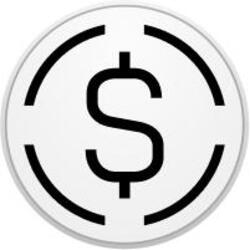One phrase echoing through the fourth-quarter earnings season is a signal that investors and corporate executives alike may have a hard time predicting 2025: “currency headwinds.” The sharp rise in the U.S. dollar in the final months of 2024 has been blamed by company after company in recent weeks for underwhelming earnings in the fourth quarter, and greater uncertainty in 2025. Edgewell Personal Care COO Dan Sullivan said the “headwinds” hurt the Schick razor company’s gross margin by 0.4 percentage points last quarter. Levi Strauss chief financial officer Harmit Singh disclosed that the stronger greenback could take a 2.5 percentage-point bite out of 2025 revenues. Newell Brands CFO Mark Erceg warned “a big currency dislocation” could hurt the Sharpie manufacturer’s first-quarter earnings. Uber CFO Prashanth Mahendra-Rajah asked investors “to assess our gross bookings growth on a constant currency basis.” Those companies are far from alone in calling foreign exchange rates a business issue. Motorcycle maker Harley-Davidson , industrial bearings producer Timken and luxury apparel firm Capri Holdings were among the other companies joining the chorus. Dollar index rally The comments come as the the U.S. Dollar Index has risen more than 3% since the start of November to above 107, after rising as high as 110 in January. The backup in bond yields since September, dimming expectations for Federal Reserve rate cuts in 2025 and threatened tariffs from President Donald Trump are three of the reasons often cited for dollar strength. .DXY 6M mountain The dollar rose sharply around the November U.S. presidential election. The stronger dollar can make life difficult for U.S. companies that sell a significant chunk of their products overseas, even if the goods are made overseas. If they keep prices steady in those markets, revenue growth can slow or even decline when foreign revenue is converted into dollars. If they hike prices to offset the foreign exchange moves, they run the risk of losing market share to cheaper competitors. Meanwhile, exports from the U.S. are less competitive against foreign-made products as the dollar appreciates. Some companies are more adept at hedging away risks of currency volatility than others, but even big hedging programs often won’t account for everything. “Roughly 60% of our revenue is in non-U.S. dollar currencies,” Netflix CFO Spencer Neumann said, according to a FactSet transcript. “And think of it as the way we look at it is, of that amount, we try to hedge roughly 50% on a rolling forward 12 month basis. So I want to stress that we view hedging as sort of a short- to medium-term solution at best.” Options for investors The impact of the changing dollar on corporate profits can trickle down to investors. Larger institutions can make currency specific trades to try to account for foreign exchange changes. John Velis, FX and Macro Strategist at BNY, said the large long-only investors in his firm’s iFlow data did just that in the closing weeks of last year. “Dollar holdings were actually underweight steadily, at least in our data, for most of 2024, until that big move in the dollar, and then those holdings unwound,” Velis said. Around that time, some investors also appeared to jump into ETFs that served as a bet that the dollar will rise . Weeding out high exposure Another way to approach the issue is to weed out the stocks and sectors that are more exposed to dollar volatility than others. “On the revenue side of things, what comes to mind are places like household and personal products, materials, energy, tech hardware,” said Cayla Seder, macro multi-asset strategist at State Street. “Those are all places where their revenues have greater-than-market average exposure to international revenues.” However, Seder did say that potential tariffs makes picking winners and losers of a stronger-dollar era more complicated. Even a company that sells an above average amount of its products in the U.S. could see their costs rise if supply inputs are hit with tariffs. This could also be an environment where smaller companies benefit from their lack of scale. Small-cap stocks tend to have less international exposure than their large-cap counterparts, and many of them trade at cheaper valuations. “Small caps I think in general tend to be more domestically focused than internationally focused,” said Rick Wedell, president and chief investment officer at RFG Advisory. “They have to worry a little about manufacturing costs rising, but they don’t necessarily have to worry about massive export problems associated with a stronger dollar.” Another wrinkle to consider is how the strong dollar affects foreign equity exposure. Funds that track foreign stock markets, or American depositary receipts of international stocks, can see their performance suffer when the underlying local currency is weaker, even though the investor is buying shares in U.S. dollars. While some professional investors believe currency markets tend to even out over time, an MSCI report from last September showed that a hedged index outperformed most major international market indexes over the prior 11 years. There are some ETFs that offer dollar-hedged exposure to international markets. WisdomTree, for example, has currency hedged ETFs tracking international stocks broadly, and Japan and Europe specifically. BlackRock’s iShares and DWS’ Xtrackers offer a similar suite of products. And last year, Precidian Investments began rolling out hedged single-name ETFs that track certain ADRs, including AstraZeneca and Shell . “If you’ve got ADRs and other foreign investments … you have dollar for dollar exposure to those underlying currencies,” said Stuart Thomas, founding principal of Precidian Investments. “You need to be aware of it, and you should consider repositioning your portfolio to take advantage of products like ADRHedged ETFs.”












































